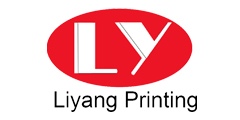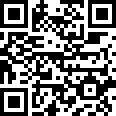Screen printing features
1. Screen printing process arrangement
Screen printing is a direct printing method, and there are three kinds of process arrangements: 1 Cardboard → Screen printing → Postpress, that is, first screen printing on corrugated cardboard or other cardboard, and then produce cartons and cartons as required; 2 Cartons → screen printing, ie, directly on the prepared corrugated boxes or other cartons, cartons for screen printing; 3 secondary processing, that is, first on the surface of the cardboard screen printing, and then made into corrugated cardboard , and then made into cartons, cartons products.
2. Screen printing features
1 Wide adaptability: Screen printing format can be large or small; 2 Ink thick: In all printing processes, the thickest ink screen printing, high saturation, spot color printing better; 3 Low cost: screen printing Plate making is easy, printing process is simple; 4 Print quality is stable; 5 Production efficiency is low: Screen printing speed is slow, not suitable for online production; 6 Image accuracy is low: resolution of screen printing is not high, the number of conventional screen lines 24 lines/cm~ 32 lines/cm.
3 screen printing application
Screen printing is suitable for small batch production, high printing appearance requirements, unlimited cardboard thickness, and no damage to the packaging products.
Screen printing process
1. Screen Production (1) Screen Selection 1 Nylon Screen: Nylon screen has high strength, high abrasion resistance, high alkali resistance, slightly poor acid resistance, good ink permeability, and small wire diameter. Good elasticity, clear imprint; 2 Polyester mesh: Polyester mesh has good stability, high strength, corrosion resistance, performance is better than nylon mesh, high stretching tension, suitable for high-precision printing; 3 stainless steel mesh: stainless steel mesh strength High, good stability, small wire diameter, high mesh, good resistance, long life, poor elasticity, easily broken by impact, suitable for precision printing, not suitable for curved printing; 4 Nickel-plated polyester mesh: nickel-plated polyester filament The net integrates the strengths of polyester mesh and stainless steel mesh, and has wide applicability, moderate price, and poor corrosion resistance.
The screen has a plain weave, a twill weave, a half weave, and a full weave. White screens can cause diffuse reflection when exposed, and golden, red, and amber absorb ultraviolet light and prevent halation. The number of screen meshes is 30 mesh/cm, 40 mesh/cm, 60 mesh/cm, 80 mesh/cm, 120 mesh/cm, 140 mesh/cm, and 160 mesh/cm. In general, mesh The number is large and the mesh is small. Filament dense mesh with high resolution; thick coarse mesh with low resolution. When printing curved surfaces, use a large flexible screen, such as nylon mesh; when printing large absorbent substrates, use a screen with a large mesh area; when printing smooth surfaces, use a high elasticity, high tension screen; printing rough surface In the case of low-mesh screens, high-accurate prints, low-elongation, high-tension screens, and printed signs, textiles, and knits, 28 mesh/cm to 78 mesh/cm; For paper, metal, glass, leather, and plastic, use a mesh of 40 mesh/cm to 140 mesh/cm.
(2) stretch net
Screen frame net frame has wooden frame, metal frame, plastic frame, combo box and so on. When the net is stretched, the net frame is first cleaned, and the net can be manually, mechanically or pneumatically applied, and the nets can be bonded and trimmed after stretching. Stretch net requires proper screen tension, uniform and stable, uniform wire, avoid oblique pull, and the warp and weft yarns are parallel to each other.
(3) Plate Making
1 Direct method: Screen cleaning → Photosensitive adhesive → Printing → Developing → Retouching. This method is time-consuming coating, adjustable film thickness, combined with a solid, resistant to India, the image is easy to saw out. 2 indirect method: photosensitive film → printing → development → film → film base → repair. This method is complicated to operate, the lines are smooth, the film is not strong, the resistance to printing is low, and the film thickness does not change. 3 mixing method: screen cleaning → foil → printing → development → revision. This method is easy to operate, has a fixed thickness, a smoother line, and is more rigid.














